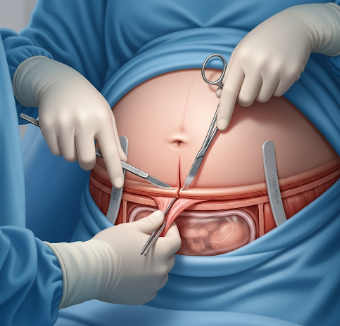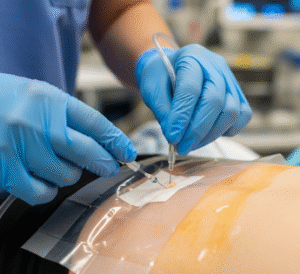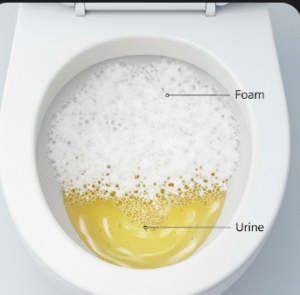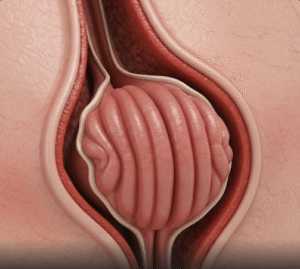Overview
An elective caesarean section (C-section) is a planned surgical procedure to deliver a baby through incisions in the mother’s abdomen and uterus. Unlike emergency C-sections, elective procedures are scheduled in advance, often for medical, personal, or obstetric reasons.
In South Korea, elective C-sections are performed in highly advanced maternity hospitals with experienced obstetricians, modern operating theaters, and comprehensive maternal care, ensuring safe delivery for both mother and baby.
What is an Elective Caesarean Section?
An elective C-section involves surgically delivering a baby at a planned time. It is typically chosen when:
- Previous C-section or uterine surgery
- Baby in a breech or transverse position
- Multiple pregnancies (twins or more)
- Maternal medical conditions (e.g., hypertension, diabetes)
- Personal preference or risk mitigation
Purpose:
- Ensure safe delivery for mother and baby
- Minimize complications associated with vaginal birth in high-risk cases
- Schedule delivery at a convenient and medically safe time
- Avoid labor-related risks such as prolonged labor or fetal distress
What are the Benefits?
Elective C-sections offer several maternal and neonatal benefits:
✔ Planned delivery reduces stress and uncertainty.
✔ Lower risk of birth-related trauma to baby in certain situations.
✔ Prevents labor complications in high-risk pregnancies.
✔ Allows scheduling to accommodate maternal health needs.
✔ Enables comprehensive preparation and post-operative care.
Procedure Details
1) How should I prepare for an Elective Caesarean Section?
- Preoperative evaluation: Complete blood work, ultrasound, and medical assessment
- Medical review: Discuss medications, allergies, previous surgeries, and conditions
- Fasting: Avoid food and drink for 6–8 hours before surgery
- Consent and counseling: Understand procedure, anesthesia, risks, recovery, and newborn care
Korean hospitals provide detailed counseling, digital fetal monitoring, and preoperative planning to ensure maternal and neonatal safety.
2) What happens during an Elective Caesarean Section?
- Anesthesia: Spinal, epidural, or general anesthesia administered
- Incision: Horizontal (most common) or vertical cut on lower abdomen and uterus
- Delivery: Baby is carefully removed; umbilical cord is clamped and cut
- Placenta removal: Placenta and membranes are removed
- Closure: Uterus and abdominal wall are stitched in layers; sterile dressing applied
- Duration: Typically 45–60 minutes
Advanced Korean maternity centers use modern surgical techniques, infection control protocols, and neonatal support teams to ensure safety and comfort.
3) What happens after an Elective Caesarean Section?
- Immediate: Mother monitored in recovery; pain management provided
- Hospital stay: Usually 3–5 days depending on recovery
- Mobility: Early ambulation encouraged to reduce risk of blood clots
- Breastfeeding and bonding: Support provided for early initiation
- Follow-up: Sutures, wound care, and postnatal check-ups
Risks / Benefits
Potential Risks:
- ➤ Infection at incision site or uterus
- ➤ Blood loss or hemorrhage
- ➤ Blood clots in legs or lungs
- ➤ Injury to bladder or surrounding organs (rare)
- ➤ Longer recovery compared to vaginal birth
- ➤ Anesthesia-related complications
Major Benefits:
- ✔ Planned delivery minimizes emergency complications
- ✔ Reduces risk of birth trauma for baby in high-risk cases
- ✔ Controlled environment for maternal and neonatal safety
- ✔ Predictable timing and preparation for family and medical team
- ✔ Effective option for previous C-section or high-risk pregnancies
Recovery and Outlook
- Immediate: Pain management, wound care, and monitoring of vital signs
- 1–2 weeks: Gradual increase in mobility; abdominal discomfort may persist
- 4–6 weeks: Sutures dissolve or are removed; full recovery typically achieved
- Long-term: Routine postnatal care ensures wound healing and maternal health
South Korean hospitals provide structured post-operative care, physiotherapy guidance, and lactation support to promote rapid and safe recovery.
When To Call the Doctor
Contact your doctor if you notice:
- ➤ Excessive bleeding or discharge from incision
- ➤ Signs of infection (redness, swelling, fever)
- ➤ Severe abdominal pain unrelieved by medication
- ➤ Shortness of breath, chest pain, or leg swelling
- ➤ Any concerns about the baby’s health or feeding
Best Korea Option / Process
South Korea offers world-class elective C-section services due to:
- Experienced obstetricians and surgical teams
- Advanced maternity hospitals with neonatal care units
- Comprehensive pre- and post-operative maternal care
- Pain management, physiotherapy, and breastfeeding support
- International patient support including consultation, scheduling, and follow-up
- High safety standards and low complication rates
Top hospitals for Elective Caesarean Section in Korea:
- Samsung Medical Center, Seoul – Obstetrics & Gynecology
- Asan Medical Center, Seoul – Advanced Maternity Services
- Severance Hospital (Yonsei University Health System) – Maternal-Fetal Medicine
- Seoul National University Hospital – Obstetrics & Neonatal Care













